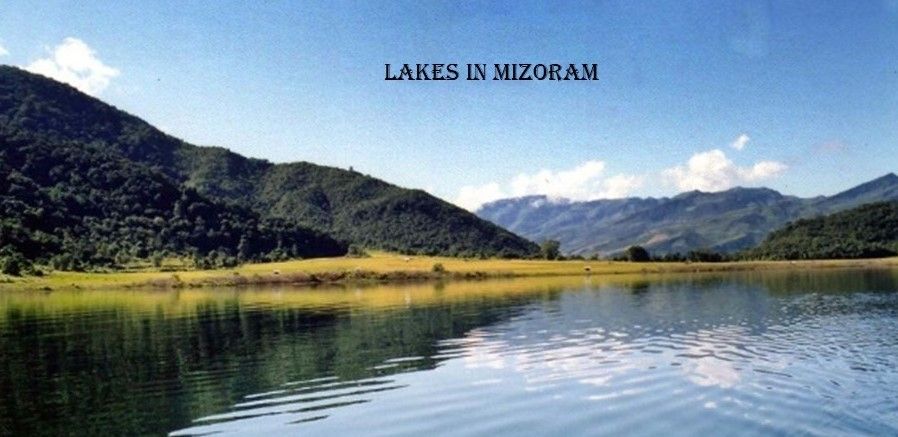
Tucked away in the lush folds of northeast India, the state of Mizoram, fondly referred to as the "land of the hill people," enchants visitors with its rolling hills, meandering rivers like Chhimtuipui, and a remarkable harmony between humans and nature. Among its many scenic treasures, Mizoram Lakes stand out as ecological gems and tranquil getaways. These shimmering bodies of water do more than dazzle the eye they support local biodiversity, strengthen rural livelihoods, and enhance eco-tourism.
Let’s take a journey across some of Mizoram’s most celebrated lakes and explore their rich tapestry of nature, mythology, and ecological significance.
Tamdil: The Lake of Mustard
Located around 110 km southeast of Aizawl and just 7 km from Saitual village, Tamdil meaning Lake of Mustard is one of Mizoram’s most beloved natural lakes. The name derives from the Mizo word Tam, a shortened form of antam (mustard), and dil, meaning lake. Local legend connects the lake to mustard fields that once flourished nearby.
This Serene Lake naturally formed and now serving as a reservoir, is enveloped by a vibrant mix of tropical evergreen and moist deciduous forests. It is teeming with aquatic life, including various species of fish and prawns, making it a hotspot for local fisheries managed jointly by Mizoram’s Tourism and Fisheries departments.
Tamdil is not only a natural attraction but also a hub for eco-tourism. It invites picnickers, bird watchers, and nature lovers to bask in its scenic glory while promoting sustainable travel practices.
Pala Tipo: The Largest Lake in Mizoram
Venture farther south to Saiha district, and you’ll encounter Pala Tipo also known as PalakDil near the village of Phura. This is Mizoram’s largest lake and arguably its most biologically significant. Its name comes from Mara folklore and directly translates to “Pala Lake.”
Set within the Indo-Burma biodiversity hotspot, Pala Tipo is an ecological wonder. The lake’s oval shape and deep blue waters cradle more than 70 species of birds, including migratory and endemic varieties. Dense forests around its perimeter house an array of flora and fauna, making this region a thriving ecological zone.
Boating is a popular activity here, offering an immersive experience into Mizoram's wild beauty. The lake also lends its name to the Palak Assembly Constituency, underlining its importance to the local community, both politically and culturally.
Rungdil: The Lake of Partridges
Rungdil, about 14 km from Suangpuilawn village, carries the poetic moniker “Lake of Partridges.” This charming body of water once echoed with the calls of countless partridges, earning it a place in local memory and lore.
Covering approximately 2.5 hectares, Rungdil is unique in its structure—two nearly identical parts separated by a narrow strip of land. This tranquil lake offers a peaceful retreat into nature, far from the bustle of city life.
Though not as large as Pala Tipo or Tamdil, Rungdil’s ecological value lies in its undisturbed environment and its role in conserving avian biodiversity.
Rengdil: Man-Made Beauty in the Wild
Unlike the other lakes on this list, Rengdilis a man-made marvel. Located around 150 km northwest of Aizawl and just 8 km from Zamuang village, Rengdil has emerged as an important resource for local Agriculture and Tourism.
Despite its artificial origins, Rengdil blends seamlessly into the natural landscape. The lake is surrounded by verdant forests and is fast becoming a favourite among tourists looking for offbeat experiences. Its accessibility and growing popularity make it a promising destination for those keen to discover lesser-known corners of Mizoram.
The Ecological and Tourism Significance
Mizoram's lakes serve as critical ecological hubs. Nestled in the folds of the Lushai Hills, these lakes provide habitats for countless aquatic and terrestrial species. Many fall within protected zones, contributing to biodiversity conservation efforts.
From an ecological lens:
- These lakes regulate micro-climates and support water conservation.
- They are vital for local fisheries, enhancing livelihoods.
- Forests around the lakes harbours medicinal plants and endemic species.
From a tourism perspective:
- The lakes offer peaceful getaways rich with cultural and mythological significance.
- They serve as centers for recreational activities such as boating, birdwatching, and nature walks.
- Tourism around these lakes helps drive sustainable development in the region by supporting homestays, guides, and local artisans.
🇮🇳 Lakes as Natural Heritage
The lakes of Mizoram are not just still waters nestled in the hills they are storytellers of tradition, biodiversity custodians, and peaceful retreats. They stand as living evidence of the state's harmonious coexistence with nature. Whether naturally formed or artificially created, each lake contributes to Mizoram Ecological fabric and its growing appeal on India’s tourism map.
For those seeking serenity wrapped in cultural depth and ecological wonder, the lakes of Mizoram offer an experience that is as enriching as it is unforgettable.